Capital One 2014 Annual Report Download - page 232
Download and view the complete annual report
Please find page 232 of the 2014 Capital One annual report below. You can navigate through the pages in the report by either clicking on the pages listed below, or by using the keyword search tool below to find specific information within the annual report.-
 1
1 -
 2
2 -
 3
3 -
 4
4 -
 5
5 -
 6
6 -
 7
7 -
 8
8 -
 9
9 -
 10
10 -
 11
11 -
 12
12 -
 13
13 -
 14
14 -
 15
15 -
 16
16 -
 17
17 -
 18
18 -
 19
19 -
 20
20 -
 21
21 -
 22
22 -
 23
23 -
 24
24 -
 25
25 -
 26
26 -
 27
27 -
 28
28 -
 29
29 -
 30
30 -
 31
31 -
 32
32 -
 33
33 -
 34
34 -
 35
35 -
 36
36 -
 37
37 -
 38
38 -
 39
39 -
 40
40 -
 41
41 -
 42
42 -
 43
43 -
 44
44 -
 45
45 -
 46
46 -
 47
47 -
 48
48 -
 49
49 -
 50
50 -
 51
51 -
 52
52 -
 53
53 -
 54
54 -
 55
55 -
 56
56 -
 57
57 -
 58
58 -
 59
59 -
 60
60 -
 61
61 -
 62
62 -
 63
63 -
 64
64 -
 65
65 -
 66
66 -
 67
67 -
 68
68 -
 69
69 -
 70
70 -
 71
71 -
 72
72 -
 73
73 -
 74
74 -
 75
75 -
 76
76 -
 77
77 -
 78
78 -
 79
79 -
 80
80 -
 81
81 -
 82
82 -
 83
83 -
 84
84 -
 85
85 -
 86
86 -
 87
87 -
 88
88 -
 89
89 -
 90
90 -
 91
91 -
 92
92 -
 93
93 -
 94
94 -
 95
95 -
 96
96 -
 97
97 -
 98
98 -
 99
99 -
 100
100 -
 101
101 -
 102
102 -
 103
103 -
 104
104 -
 105
105 -
 106
106 -
 107
107 -
 108
108 -
 109
109 -
 110
110 -
 111
111 -
 112
112 -
 113
113 -
 114
114 -
 115
115 -
 116
116 -
 117
117 -
 118
118 -
 119
119 -
 120
120 -
 121
121 -
 122
122 -
 123
123 -
 124
124 -
 125
125 -
 126
126 -
 127
127 -
 128
128 -
 129
129 -
 130
130 -
 131
131 -
 132
132 -
 133
133 -
 134
134 -
 135
135 -
 136
136 -
 137
137 -
 138
138 -
 139
139 -
 140
140 -
 141
141 -
 142
142 -
 143
143 -
 144
144 -
 145
145 -
 146
146 -
 147
147 -
 148
148 -
 149
149 -
 150
150 -
 151
151 -
 152
152 -
 153
153 -
 154
154 -
 155
155 -
 156
156 -
 157
157 -
 158
158 -
 159
159 -
 160
160 -
 161
161 -
 162
162 -
 163
163 -
 164
164 -
 165
165 -
 166
166 -
 167
167 -
 168
168 -
 169
169 -
 170
170 -
 171
171 -
 172
172 -
 173
173 -
 174
174 -
 175
175 -
 176
176 -
 177
177 -
 178
178 -
 179
179 -
 180
180 -
 181
181 -
 182
182 -
 183
183 -
 184
184 -
 185
185 -
 186
186 -
 187
187 -
 188
188 -
 189
189 -
 190
190 -
 191
191 -
 192
192 -
 193
193 -
 194
194 -
 195
195 -
 196
196 -
 197
197 -
 198
198 -
 199
199 -
 200
200 -
 201
201 -
 202
202 -
 203
203 -
 204
204 -
 205
205 -
 206
206 -
 207
207 -
 208
208 -
 209
209 -
 210
210 -
 211
211 -
 212
212 -
 213
213 -
 214
214 -
 215
215 -
 216
216 -
 217
217 -
 218
218 -
 219
219 -
 220
220 -
 221
221 -
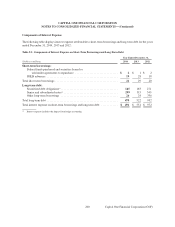 222
222 -
 223
223 -
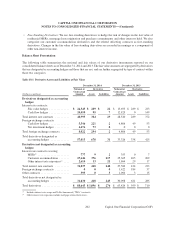 224
224 -
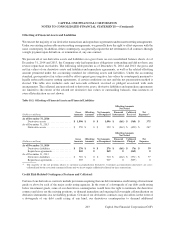 225
225 -
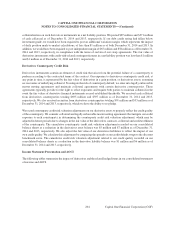 226
226 -
 227
227 -
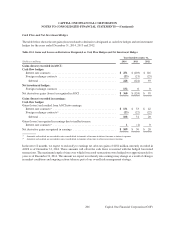 228
228 -
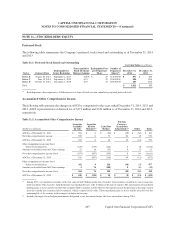 229
229 -
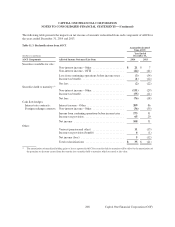 230
230 -
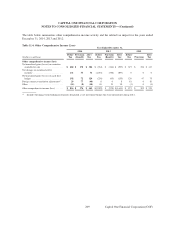 231
231 -
 232
232 -
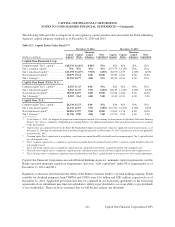 233
233 -
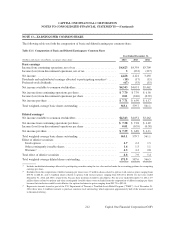 234
234 -
 235
235 -
 236
236 -
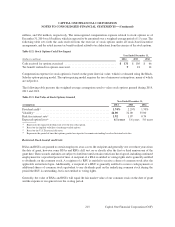 237
237 -
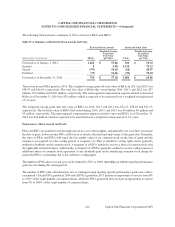 238
238 -
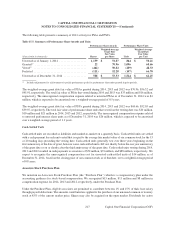 239
239 -
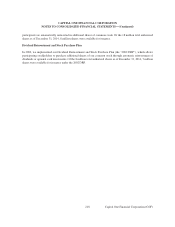 240
240 -
 241
241 -
 242
242 -
 243
243 -
 244
244 -
 245
245 -
 246
246 -
 247
247 -
 248
248 -
 249
249 -
 250
250 -
 251
251 -
 252
252 -
 253
253 -
 254
254 -
 255
255 -
 256
256 -
 257
257 -
 258
258 -
 259
259 -
 260
260 -
 261
261 -
 262
262 -
 263
263 -
 264
264 -
 265
265 -
 266
266 -
 267
267 -
 268
268 -
 269
269 -
 270
270 -
 271
271 -
 272
272 -
 273
273 -
 274
274 -
 275
275 -
 276
276 -
 277
277 -
 278
278 -
 279
279 -
 280
280 -
 281
281 -
 282
282 -
 283
283 -
 284
284 -
 285
285 -
 286
286 -
 287
287 -
 288
288 -
 289
289 -
 290
290 -
 291
291 -
 292
292 -
 293
293 -
 294
294 -
 295
295 -
 296
296 -
 297
297 -
 298
298 -
 299
299 -
 300
300
 |
 |

NOTE 12—REGULATORY AND CAPITAL ADEQUACY
Regulation and Capital Adequacy
Bank holding companies and national banks are subject to capital adequacy standards adopted by the Federal Reserve
and the OCC, respectively. The capital adequacy standards set forth minimum risk-based and leverage capital
requirements that are based on quantitative and qualitative measures of assets and off-balance sheet items. National
banks, as insured depository institutions, are also subject to Prompt Corrective Action (“PCA”) capital regulations,
which require the Federal Reserve, OCC and FDIC (collectively, the “Federal Banking Agencies”) to take PCA for
banks that do not meet established minimum capital requirements.
In July 2013, the Federal Banking Agencies finalized a new capital rule that implements the Basel III capital accord
(the “Final Basel III Capital Rules”) developed by the Basel Committee on Banking Supervision (“Basel
Committee”) and certain Dodd-Frank Act capital provisions and updates the PCA capital requirements. Prior to
being revised in the Final Basel III Capital Rules, the minimum risk-based capital requirements adopted by the
Federal Banking Agencies followed the Basel I framework, originally promulgated pursuant to the Basel Committee’s
Basel I accord, and the advanced approaches capital rules (“Advanced Approaches”), based upon the framework
originally promulgated as a result of the Basel II accord. The Final Basel III Capital Rules amended both the Basel
I and Advanced Approaches frameworks, establishing a new common equity Tier 1 capital requirement and setting
higher minimum capital ratio requirements. The Company refers to the amended Basel I framework as the “Basel
III Standardized Approach,” and the amended Advanced Approaches framework as the “Basel III Advanced
Approaches.”
At the end of 2012, the Company met one of the two independent eligibility criteria set by banking regulators for
becoming subject to the Advanced Approaches capital rules. As a result, the Company has undertaken a multi-year
process of implementing the Advanced Approaches regime for calculating risk-weighted assets and regulatory capital
levels. Certain provisions of the Final Basel III Capital Rules began to take effect on January 1, 2014 for Advanced
Approaches banking organizations, including the Company.
As of January 1, 2014, the minimum risk-based and leverage capital requirements for Advanced Approaches
banking organizations include a common equity Tier 1 capital ratio of at least 4.0%, a Tier 1 risk-based capital
ratio of at least 5.5%, a total risk-based capital ratio of at least 8.0%, and a Tier 1 leverage capital ratio of
at least 4.0%.
Prior to 2014, we also disclosed a Tier 1 common capital ratio for our bank holding company, which is a regulatory
capital measure widely used by investors, analysts, rating agencies and bank regulatory agencies to assess the capital
position of financial services companies. There was no mandated minimum or well-capitalized standard for the Tier
1 common capital ratio.
210
CAPITAL ONE FINANCIAL CORPORATION
NOTES TO CONSOLIDATED FINANCIAL STATEMENTS—(Continued)
Capital One Financial Corporation (COF)
